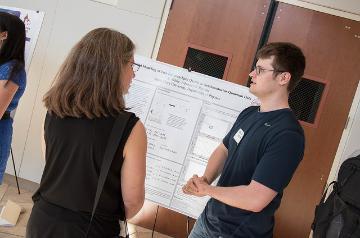
Orbital Modeling Two-Electron Spin Qubits in Semiconductor Quantum Dots
Zack White
Faculty Mentor: Guy Ramon
Semiconductor quantum dots (QDs) are an attractive platform for quantum computing due to their compatibility with existing microelectronic technologies. However, QD devices still suffer from noisy charge and nuclear environments that make them difficult to control. Possible quantum information holders (qubits) include localized electron or nuclear spin, which are less susceptible to interaction with external uncontrolled degrees of freedom (decoherence), making them vital ingredients in emerging technologies. One promising scheme encodes the qubit logical states in the singlet and triplet spin configurations of two electrons in a double QD, taking advantage of the Coulomb coupling between them to improve accessibility. This work fills a theoretical gap by developing an extended orbital model for two-electron states in double QDs that includes excited orbitals. The extended state basis is necessary to account for the dynamics of the qubit when operated under large bias, a working point that holds promise for better qubit performance that was accessed experimentally only very recently. This model captures the primary physical mechanisms while remaining mostly analytical. It is anticipated that it will be useful as a design tool in the analysis of decoherence mechanisms and manipulation protocols of current and new spin-based qubit devices.